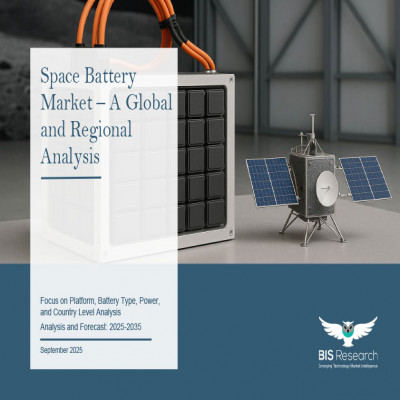Introduction to Asia-Pacific Space Battery Market
The Asia-Pacific space battery market is projected to reach $131,690.2 thousand by 2035 from $75,351.8 thousand in 2024, growing at a CAGR of 5.27% during the forecast period 2025-2035. The market for APAC space batteries, which provide dependable, mission-critical energy storage for satellites, orbital transfer vehicles, launch systems, and space stations, is essential to sustaining the region's growing space activity. Throughout the mission lifecycle, batteries are crucial because they power high-demand operations like maneuvers and instrument usage, bridge eclipse periods, and guarantee continuous performance on long-duration missions with little sunlight.
The market is moving toward lighter, safer, and higher-energy solutions as a result of more frequent launches and ambitious mission architectures throughout Asia Pacific. AI-enabled battery management systems, modular pack designs, and the quick development of solid-state and lithium-sulfur battery chemistries are all contributing to increased performance, longer battery life, and reliability. These developments put the APAC area in a position to handle the needs of deep-space missions, satellite deployment, and next-generation space exploration.
Market Introduction
The APAC space battery market is experiencing significant growth, fueled by increasing satellite launches, space exploration missions, and commercial space initiatives across the region. Satellites, launch vehicles, orbital transfer systems, and space stations all depend on batteries to provide mission-critical energy storage. They assist high-demand operations like maneuvers and the use of scientific instruments, guarantee uninterrupted power during eclipse times, and keep the aircraft operating during extended flights with little or no sunlight.
The need for lighter, safer, and more energy-efficient battery solutions is being driven by an increase in the frequency of launches and ambitious mission architectures in nations like China, India, Japan, and Australia. Lithium-ion, lithium-sulfur, and new solid-state batteries are examples of advanced chemistries that are being used more and more to increase energy density, dependability, and operational lifespan. Furthermore, AI-enabled battery management systems and modular battery pack designs improve performance, make predictive maintenance possible, and prolong mission life.
Telecommunication, Earth observation, research satellites, and deep-space exploration missions are among of the main uses propelling expansion. Innovation and the commercialization of better battery solutions are encouraged by government backing from institutions such as ISRO, JAXA, and national space agencies.
High development costs, safety issues, hostile space conditions, and strict certification standards are still obstacles, though. All things considered, the APAC space battery market is expected to grow rapidly due to rising satellite installations, technical developments, and the region's growing involvement in next-generation space missions.
Market Segmentation:
Segmentation 1: by Platform
• Satellites
• Deep Space Missions
• Orbital Transfer Vehicles (OTVs)
• Space Stations
• Launch Vehicles
Segmentation 2: by Battery Type
• Lithium-Based Batteries
• Silver-Zinc Batteries
• Nickel-Based Batteries
• Others
Segmentation 3: by Power
• Less than 1 kW
• 1–10 kW
• 11–100 kW
• More than 100 kW
Segmentation 4: by Region
• Asia-Pacific
APAC Space Battery Market Trends, Drivers and Challenges
Market Trends
• Rising Adoption of Lithium-Ion Batteries: High-energy-density lithium-ion systems dominate satellite and spacecraft applications.
• Growth of CubeSats and Small Satellites: Increasing demand for compact, lightweight battery solutions.
• Integration with Solar Power Systems: Batteries paired with solar arrays for efficient energy storage.
• Advanced Battery Management Systems: AI-enabled and smart modular designs for optimized performance.
• Research into Solid-State & Lithium-Sulfur Batteries: Focus on safer, higher-energy alternatives.
• Long-Life, High-Reliability Technologies: Batteries designed for deep-space missions and extended mission durations.
Market Drivers
• Expansion of Satellite Programs: Commercial and government satellite launches are increasing across APAC.
• Rising Space Exploration Initiatives: Deep-space, Earth observation, and communication missions drive battery demand.
• Technological Advancements: Development of high-efficiency, lightweight, and long-duration energy storage solutions.
• Government & Regional Initiatives: Support from agencies like ISRO, JAXA, and national space programs.
• Growth of Small Satellite Deployments: CubeSats for research, communications, and remote sensing applications.
Market Challenges
• High Development & Manufacturing Costs: Advanced battery technologies require significant R&D investment.
• Safety & Thermal Management Concerns: Managing heat and preventing failures under space conditions.
• Limited Cycle Life in Extreme Conditions: Radiation, temperature fluctuations, and vacuum affect longevity.
• Stringent Certification & Testing Requirements: Compliance with rigorous standards for space missions.
• Supply Chain Dependencies: Reliance on specialized materials and components for manufacturing.

